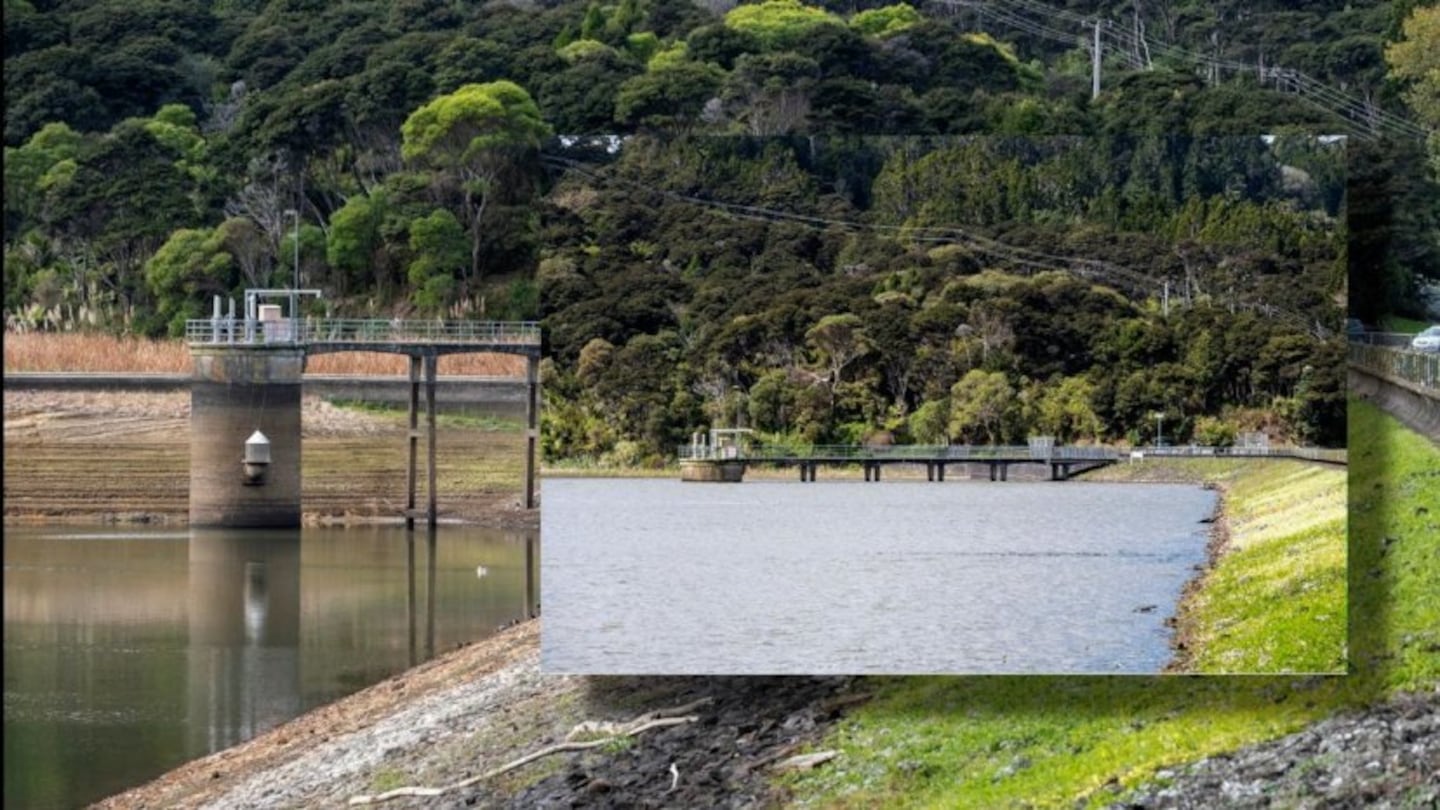Lower Niho Dam before and after (inset) October 2021 . Source / Auckland Council
Auckland Council have agreed to lift the remaining water restrictions after a record-breaking drought in 2019/2020.
It was a unanimous decision by the governing body over the remaining outdoor water restrictions, as instructed in a Watercare report.
Auckland mayor Phil Goff says the new water supply over the last 18 months, to ensure restrictions will not be reintroduced in the near future, has meant dam levels are now above normal.
“Increased rainfall since August has significantly boosted dam storage levels,” Goff says.
“Current storage is above 93 per cent, up from just 60 per cent in July and slightly higher than the level normal at this time of year. This means we have headroom to lift the remaining water restrictions with little risk that they would need to be reimposed in the short term.

Upper Mangatawhiri before and after in October 2021 / Auckland Council
Today the restrictions were lifted for the first time since May 16, 2020, which saw Auckland dams drop to 42.5 percent.
“Aucklanders have done a fantastic job of reducing their water consumption over the 17 months since restrictions were first introduced—saving more than 20 billion litres.
“We have also developed water-saving habits that on average are seeing 36 million litres less water consumed each day than in 2019 (based on the rolling 12-month average). I thank Aucklanders for this and ask them to maintain their water saving habits both to save themselves money and help the environment."
Council will also support Watercare to increase water supply in the first quarter of 2022 by 104 million litres a day higher than the pre-drought period, he says.
“Watercare will continue to invest to ensure that we can both meet increased demand from population growth and to protect against future droughts that may increase with climate change.”
Watercare chief executive Jon Lamonte says the outdoor water restrictions, coupled with the Water Is Precious campaign, have served Auckland well.
“The city has come together to reduce our collective water use, with huge reductions made from both our commercial and residential customers,” he says. “This, along with our work to reduce leaks in the public network, have formed the demand reduction part of our drought response.”
“The other key component of our drought response is our work to increase the amount of water we have available."
Hamilton City Council were also part of the response that allocated 25 million litres a day last summer which is still in place today.
“Mandatory restrictions will always serve as a tool for managing severe droughts in the future. They’re commonly used around the world during a drought as a way of stretching out the available supply until the rain returns. We’ve only needed restrictions twice in our 29-year history, but at some point in the future we’ll likely need to apply them again,” Lamonte says.



